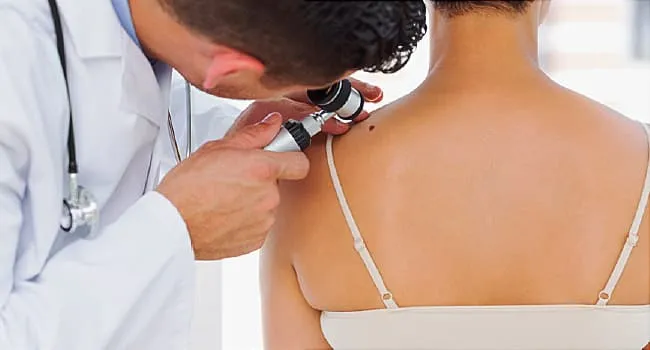
Artificial intelligence (AI) is ramping up how dermatologists diagnose skin conditions, even serious cancers like melanoma. While far from perfect, it's promising. "We're only just starting to scratch the surface of what's possible," says Bobby Buka, MD, CEO of The Dermatology Specialists in New York. Here's what else Bukahad to say.
How is AI working now?
Buka: Currently the most impactful AI is focused on diagnosing pigmented lesions, which includes some of the deadliest cancers, like melanoma. The color and distinct boundaries means AI has the best chance of identifying atypical features.
How does it work?
Buka: There's one technology called MelaFind that uses infrared light to evaluate pigmented lesions up to a few millimeters below the skin. Then sophisticated AI algorithms evaluate that scanned data to diagnose serious skin cancers, including melanoma. There's also an app called SkinVision that allows you to take a picture of your own mole; it then uses a computer algorithm to try and give you an assessment of that mole.
How accurate is it?
Buka: While the technology is promising, the margin of error isn't yet small enough to warrant using it in lieu of a biopsy, for example. That being said, there are patients around the world without access to quality dermatological care. For those patients, this kind of AI can already help save lives, and it's getting better all the time.
Can AI detect other skin conditions?
Buka: It's still pretty limited to pigmented lesions. Rashes, for example, are much tougher to photograph and scan. They're also tougher to diagnose. A rash from a viral exposure could look nearly identical to a rash from a drug reaction. AI isn't sophisticated enough to conquer those nuances -- at least not yet.
Can my smartphone app detect skin problems?
Buka: Apps like SkinVision and MoleMapper allow you to take serial photographs of your moles and track them over time. Being able to monitor these kinds of changes is extremely valuable when it comes time to make a diagnosis. On the other hand, apps that try to make diagnoses without a dermatologist are currently not very helpful. The accuracy rate is still too low, but the technology is improving.
What does the future look like?
Buka: AI is certainly the future, and it's only getting better. There's no question I'll be replaced in my lifetime by AI, but we're not there yet. Rest assured, we have some of the brightest minds innovating to get the diagnosing accuracy of AI closer to 100%. Until then, here's the best piece of advice when you have a skin concern: Go see a dermatologist.
Human Detection
AI isn't the only way to spot skin cancer like melanoma. Your eyes are a powerful diagnostic tool. Here's what the American Cancer Society says to look for.
1. Asymmetry
Check to see if one part of a mole doesn't match the other.
2. Border
Are the edges of a mole irregular, ragged, notched, or blurred?
3. Color
Look for color that isn't uniform, has shades of brown or black, or patches of pink, red, white, or blue.
4. Diameter
Is the spot bigger than 1/4 inch across? That's about the size of a pencil eraser. Some melanomas are smaller, but this is a guideline.
5. Evolving
Is the mole changing in size, shape, or color? Keep watching so you can track it over time.
Find more articles, browse back issues, and read the current issue of WebMD Magazine.
